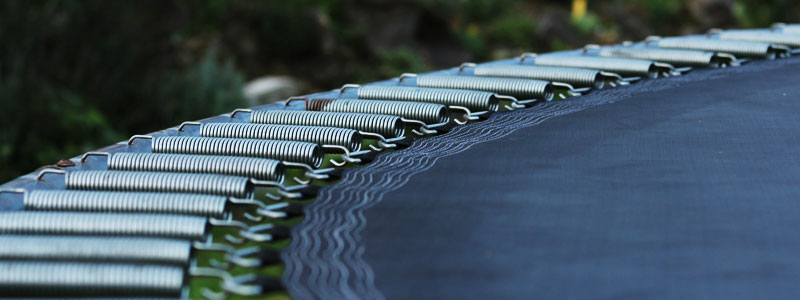Who’s Liable for Trampoline Injuries?
Perhaps the most notorious source of childhood injuries is the trampoline. Though the owners may have the most popular backyard in the neighborhood, it’s worth knowing more about the risks involved with this piece of playground equipment and who might be responsible in case of an accident. Between 2002 and 2011, over 1 million children […]

February 19, 2018

Perhaps the most notorious source of childhood injuries is the trampoline. Though the owners may have the most popular backyard in the neighborhood, it’s worth knowing more about the risks involved with this piece of playground equipment and who might be responsible in case of an accident.
Between 2002 and 2011, over 1 million children came to emergency rooms across the country with injuries sustained on a trampoline. The most common injury was fractured bones, and children under the age of 6 seem to be the most susceptible to skeletal injuries.
The American Academy of Pediatrics (AAP) has issued several statements about the use of trampolines in domestic settings and their message is clear: Don’t buy or use trampolines. They were invented for professional gymnasts to perform tumbling exercises and come with many hidden or unavoidable risks.
If you choose to allow your children to use trampolines, keep an eye on them. Check the equipment regularly if possible, and make sure appropriate safety nets and pads are in place. Even taking these precautions won’t guarantee complete safety, but it can help reduce the risk of serious injury and teach kids to have fun in a safe way.
Who’s Responsible for Trampoline Injuries?

When an accident involving a trampoline causes an injury, the first question to ask to determine liability is whether the user was at fault for their own injury. Reckless behavior, intentional misuse of safety equipment, and other individual choices can mean no one else is responsible for the injury.
However, if a trampoline user followed reasonable safety procedures and was using common sense, three other parties could be to blame:
- The trampoline manufacturer
- Another trampoline user
- The owner of the trampoline
Assigning Fault
To dig deeper, you will need to have a full picture of how the injury occurred. Ask questions like:
- “What directly caused the accident?”
- “Who saw what happened?”
- “Where did the injury occur?”
- “Why did this happen?”
These questions will help solidify a potential personal injury claim as well as clarify if the root cause of the accident was equipment failure or human error.
Common Accident Scenarios
While every situation is unique, and only an attorney can provide legal counsel, there are a few standard scenarios in which a personal injury claim may be filed against the party at fault for the trampoline injury.
- An improperly manufactured part failed during routine use of the trampoline.
- The trampoline owner did not maintain the equipment properly, which caused an equipment failure during normal use.
- The other people on the trampoline did not use it responsibly or safely.
Now, depending on the context of the accident, these stories may end differently. When you ask questions, it’s important to not only confirm the party at fault but to eliminate the other parties from blame.
Types of Cases Resulting from a Trampoline Injury

The reason it’s important to be absolutely sure of who caused the accident and injury is because there are three types of cases that correspond to each of the three potentially guilty parties:
- If the manufacturer caused the accident, you may have a product liability case.
- If the owner of the trampoline is responsible, you may have a premises liability case.
- If another user on the trampoline is to blame, you may have a negligence case.
As you may imagine, once you start on one of these claims, it can be difficult to start over if it turns out some other party was actually at fault.
Premises Liability Claims
The most common lawsuits for trampoline injuries tend to be premises liability. In general, the trampoline owner is responsible for three things: taking care of the trampoline, supervising trampoline activities, and restricting access to the trampoline.
It can be hard to nail down liability on another homeowner because each of these three criteria for proper ownership can be refuted more easily than they can be proved. However, if a neighbor lets kids jump five-at-a-time on an old, rusty trampoline that isn’t guarded by any kind of enclosure, you may have a legitimate case for compensation.
Guidance from an Indiana Personal Injury Attorney
If your child has been hurt because of another person’s negligence, you shouldn’t have to worry about filing three different types of lawsuits. The attorneys at Hensley Legal Group will coach you on what information will be relevant for your case and take care of all the behind-the-scenes work while you focus on caring for your family. Contact us today for a free conversation about your case.
Available 24/7
Free Case Review
You won’t pay any fees until we win your case.
It’s easy - you can: